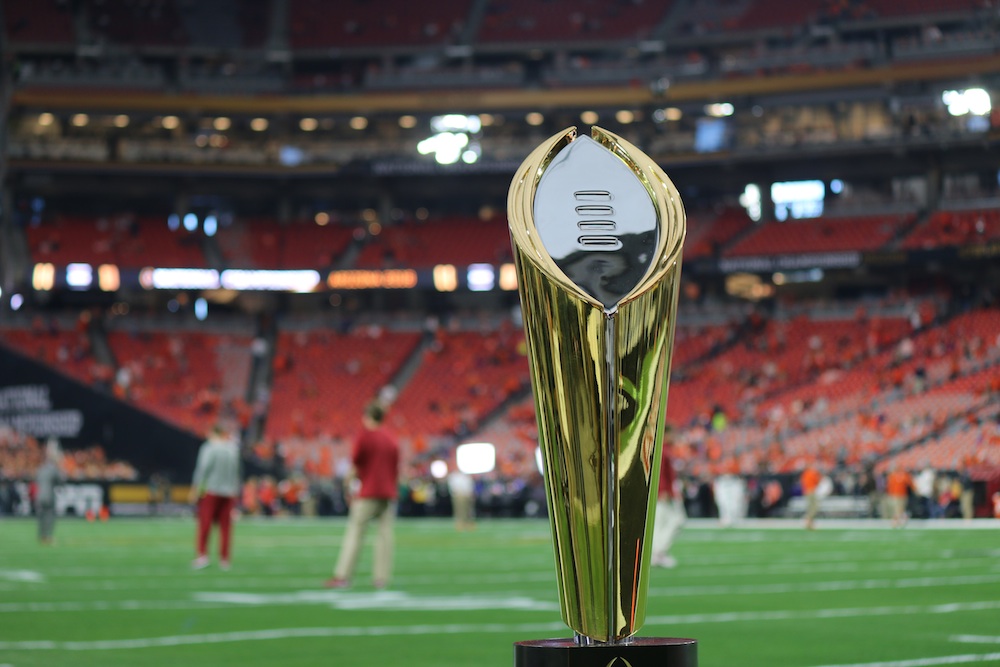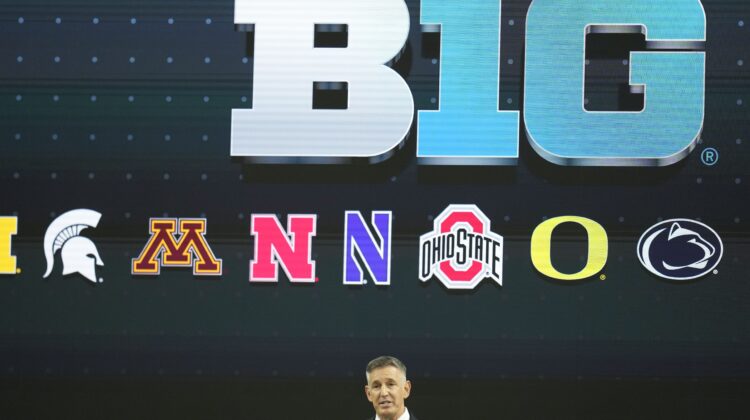After months of mulling and modeling, the Big Ten revealed its tiebreaker formula for the 2024 season on Monday.
It’s three pages long.
Three 8×11 pages long.
Step six uses the SportsSource Analytics rankings at the end of the regular season.
The seventh and final step calls for commissioner Tony Petitti to conduct a random draw, which is safer than throwing darts but perhaps not as visually satisfying as a coin flip.
To be clear: The Hotline believes the situation is worthy of three pages.
No process so potentially complex should be solved in a few steps—not when the issue is a conference race unlike any in the sport’s history.
The complexity is rooted in the Big Ten’s revamped structure: an 18-team league with no divisions, nine conference games, and eight conference misses.
Record against common opponents has traditionally been the decisive step in unraveling deadlocks in college football. But with each Big Ten team missing eight of the others, the common-opponent component is less likely to resolve ties.
For the first time in Big Ten history, the teams with the best winning percentage in conference games, not division winners, will meet for the championship.
The conference race could end with two teams tied for first place or three teams tied for second place. Anything is possible in this uncharted era.
As always, head-to-head results will rule the process. But if the two tied teams did not play each other, the process moves on:
Step 3: The records of the two tied teams will be compared based on record against all common conference opponents.
Step 4. The records of the two tied teams will be compared based on record against common opponents with the best conference record and proceeding through the common conference opponents based on their order of finish within the conference standings.
Step 5. The records of the two tied teams will be compared based on the best cumulative conference winning percentage of all conference opponents:
— (a) In the event of an unbalanced schedule (i.e., less than nine conference games are played), the records of the two tied teams will be compared based on the best cumulative conference winning percentage of all conference opponents, regardless of how many conference opponents each team played. If winning percentage is equal for all conference opponents, move to next step in tiebreaker.
Step 6. The representative will be chosen by the highest ranking by SportSource Analytics (team Rating Score metric) following the regular season.
Step 7. Random draw among the tied teams conducted by Commissioner or designee.
Got it? Good, because that is only the first of the three pages.
The process for resolving ties of three or more teams requires an additional page.
Then comes a section devoted to eligibility, which states:
A team or teams that are not eligible to participate in a postseason football bowl game because of NCAA and/or Big Ten sanctions shall not be eligible to participate in the Big Ten Football Championship Game.
If one or both Big Ten teams with the highest winning percentage after the regular season is ineligible to play in the Big Ten Championship Game, then the participant(s) in the Big Ten Championship Game shall be determined by the following procedure:
— a) If the ineligible team is tied for the No. 1 position in the standings, then the teams in the No. 2 and No. 3 position in the standings shall be the Big Ten Championship Game representatives.
— b) If two or more teams are tied with an ineligible team for the No. 1 or No. 2 position in the standings, then the ineligible team is removed and the remaining teams revert to the tiebreak procedure.
Finally, the tiebreaker policy explains how the Big Ten will determine its automatic qualifier for the College Football Playoff if the conference championship game cannot be played.
(That process also ends with the SportSource Analytics rankings and then a random draw.)
Granted, a canceled title game seems unlikely. The Big Ten managed to stage a conference championship during a pandemic, after all.
But you know what else always seemed unlikely? An 18-team conference with no divisions.
The complete policy can be found here.
Related posts:

. (AP Photo/Mark J. Terrill)
Wilner Hotline: Ten Need-To-Knows For Pac-12 Week Six Jon Wilner talks future of a different Pac-12, new college landscape
Jon Wilner talks future of a different Pac-12, new college landscape

(AP Photo/Marcio Jose Sanchez)
Pac-12 rewind: Arizona stands alone, WSU keeps pace and UCLA rolls on following road sweeps College Football Playoff: Conferences solve their differences (for now) and agree on general framework for 2026 and beyond
College Football Playoff: Conferences solve their differences (for now) and agree on general framework for 2026 and beyond


